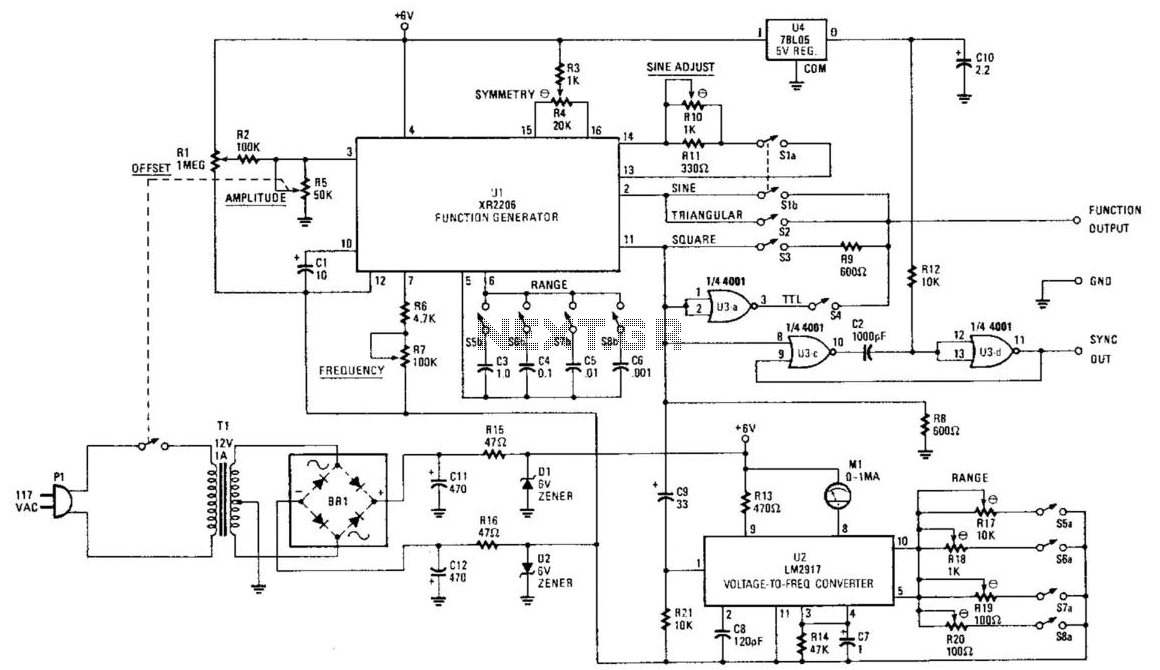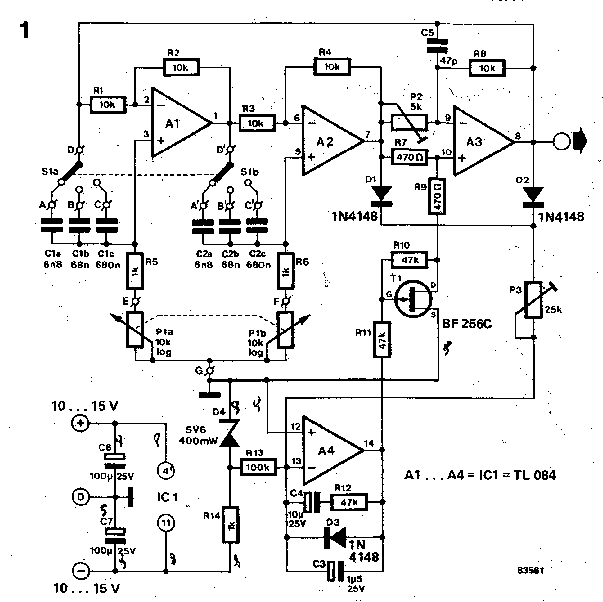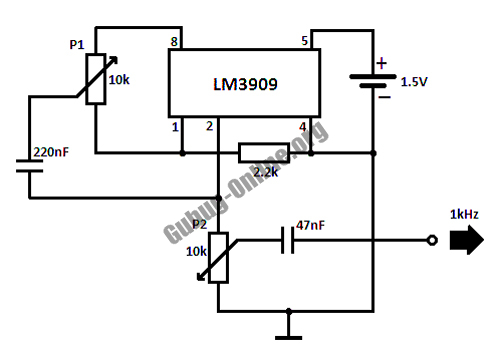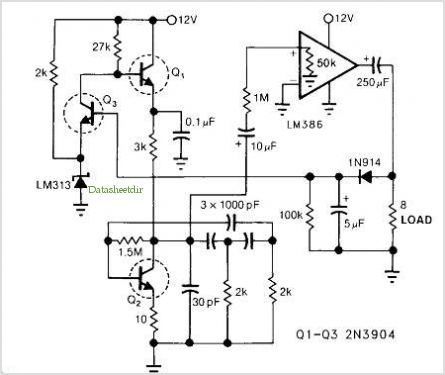
Sine Wave Generator (1KHz Frequency)

This is a kHz sine wave generator circuit built based on the configuration of an inverted Wien bridge (see C1-R3 C2-R4). R5 and R7 are used for output amplitude setting. Set R5 to read 1V RMS on an audio millivoltmeter connected to the output with R7.
The described kHz sine wave generator circuit utilizes an inverted Wien bridge oscillator configuration, which is known for its stability and low distortion in generating sine waves. The circuit consists of two capacitors (C1 and C2) and four resistors (R3, R4, R5, and R7). The Wien bridge configuration is effective in producing a precise frequency output, which can be adjusted by modifying the resistor and capacitor values.
In this circuit, the resistors R5 and R7 play crucial roles in determining the output amplitude. R5 is specifically set to achieve a desired output voltage of 1V RMS when measured with an audio millivoltmeter, ensuring that the output signal meets the requirements for various audio applications. The adjustment of R7 allows for fine-tuning of the amplitude, providing flexibility in the output signal's strength.
The capacitors C1 and C2, in conjunction with the resistors, help establish the frequency of oscillation. The frequency can be calculated using the formula f = 1 / (2πRC), where R is the equivalent resistance and C is the capacitance. By selecting appropriate values for these components, the frequency can be accurately set within the desired kHz range.
Overall, this sine wave generator circuit is an effective solution for applications requiring stable sine wave signals, such as in audio testing, signal processing, and waveform generation. The straightforward design allows for easy implementation and adjustment, making it suitable for both experimental and practical uses in electronics.This is iKHz sine wave generator circuit built based on configuration of inverted Wien bridge (see C1-R3 C2-R4). R5 and R7 used for output amplutide setting. Set R5 to read 1V RMS on an Audio Millivoltmeter connected to the output with R7 ro.. 🔗 External reference
The described kHz sine wave generator circuit utilizes an inverted Wien bridge oscillator configuration, which is known for its stability and low distortion in generating sine waves. The circuit consists of two capacitors (C1 and C2) and four resistors (R3, R4, R5, and R7). The Wien bridge configuration is effective in producing a precise frequency output, which can be adjusted by modifying the resistor and capacitor values.
In this circuit, the resistors R5 and R7 play crucial roles in determining the output amplitude. R5 is specifically set to achieve a desired output voltage of 1V RMS when measured with an audio millivoltmeter, ensuring that the output signal meets the requirements for various audio applications. The adjustment of R7 allows for fine-tuning of the amplitude, providing flexibility in the output signal's strength.
The capacitors C1 and C2, in conjunction with the resistors, help establish the frequency of oscillation. The frequency can be calculated using the formula f = 1 / (2πRC), where R is the equivalent resistance and C is the capacitance. By selecting appropriate values for these components, the frequency can be accurately set within the desired kHz range.
Overall, this sine wave generator circuit is an effective solution for applications requiring stable sine wave signals, such as in audio testing, signal processing, and waveform generation. The straightforward design allows for easy implementation and adjustment, making it suitable for both experimental and practical uses in electronics.This is iKHz sine wave generator circuit built based on configuration of inverted Wien bridge (see C1-R3 C2-R4). R5 and R7 used for output amplutide setting. Set R5 to read 1V RMS on an Audio Millivoltmeter connected to the output with R7 ro.. 🔗 External reference





